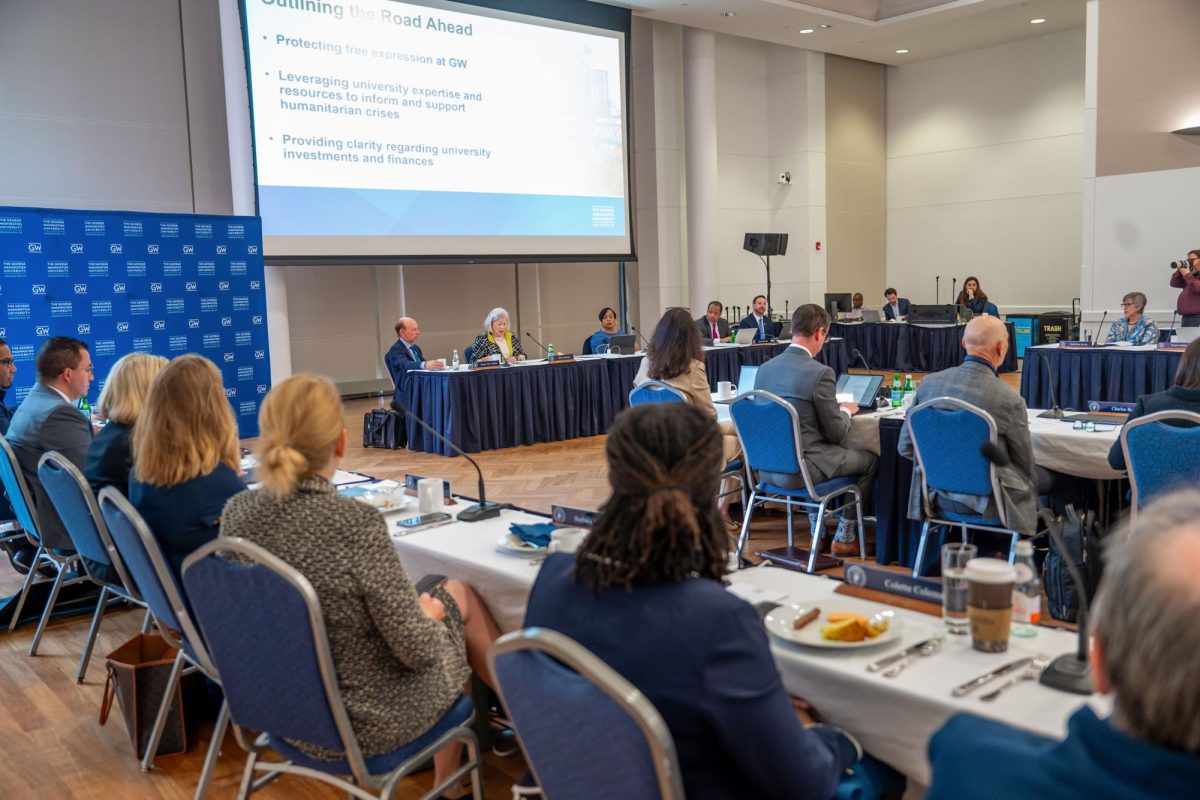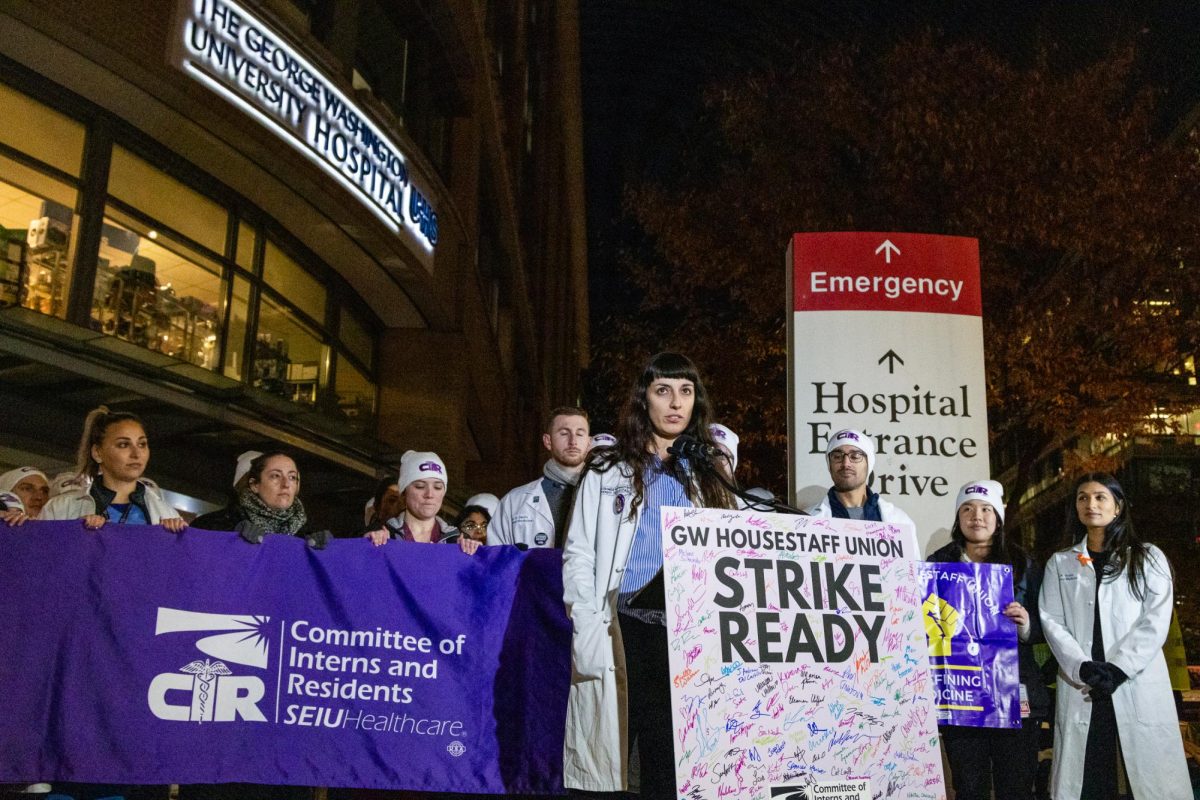In his first days as University president, Thomas LeBlanc pledged to be a visible presence on campus.
But in his final days leading GW, LeBlanc has stayed out of the spotlight, preparing to cap off a rocky tenure that culminated with widespread calls for his resignation, at times prompting national attention to the division between his administration and the University community.
Those negative headlines have in part caused concerns within the Board of Trustees about GW’s ability to attract an effective candidate to succeed LeBlanc. Beginning Jan. 1, an interim president will lead GW for up to the next 18 months, as trustees delay the presidential search.
LeBlanc’s main aspiration for GW was to achieve “preeminence,” meaning GW would become what he called a “comprehensive global research university.” It would lead to improvements to the student experience, a shift in GW’s enrollment strategy and restructuring the University’s internal operations.
LeBlanc, who declined multiple requests for a final interview with The Hatchet, said in a statement that his tenure was also marked by both “extraordinary highs,” like GW’s bicentennial celebrations and challenges like responding to the COVID-19 pandemic.
“I am proud of our work together to strengthen the academic mission, make a GW education more accessible, and, most importantly, to improve the student experience,” he said in an email. “The future is bright, and I look forward to continuing to support the University and seeing the growing impact of GW on society and on future generations of students.”
Here’s a look back at the rocky tenure of GW’s 17th president:
2017-18 academic year
The Board tapped LeBlanc to replace former University President Steven Knapp in January 2017. LeBlanc, the former provost at the University of Miami, began his four-year stint that August, spending his first months conducting town hall meetings to gauge the community.
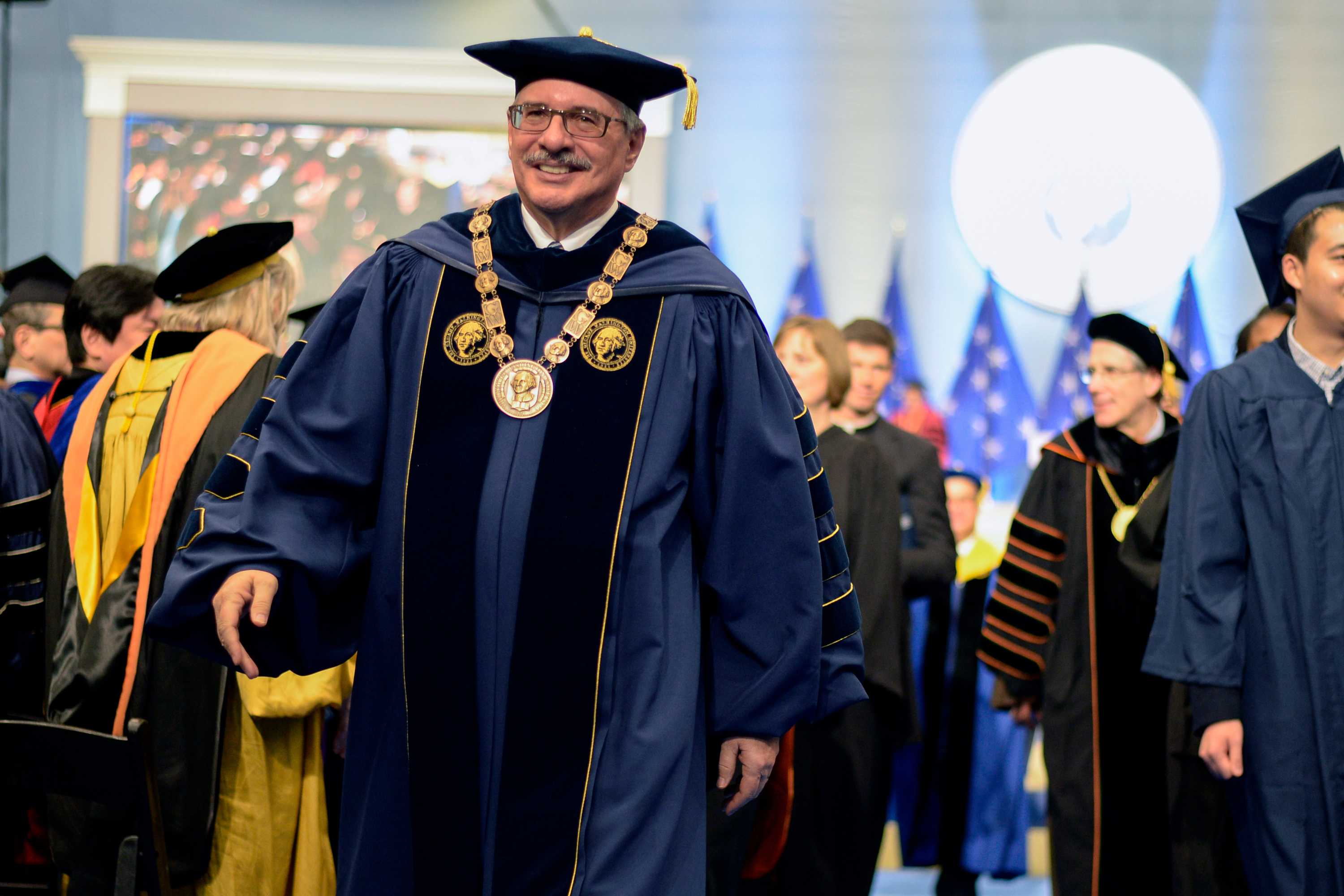
File Photo by Sam Hardgrove
“We have to understand what we’re doing and how it attaches to our core values, and more and more we’re being asked to defend what we’re doing,” he said in his first month on campus.
Those town halls spurred the creation of five strategic initiatives that would encompass LeBlanc’s top priorities – the student experience, philanthropy, research, the medical enterprise and institutional culture.
LeBlanc said he wanted to move away from a “bureaucratic” culture at the University that he argued made community members feel unheard. He launched the effort by giving staff a full week off between Christmas and New Year’s Day.
“I’ve gotten more thanks for that than anything else I’ve done since I got here,” he said at the time.
To improve the student experience, the Board approved a dining dollars increase and administrators consolidated the student affairs and enrollment departments into a single office.
2018-19 academic year
In his second year as president, LeBlanc continued plans to improve GW’s institutional culture. Officials enlisted the assistance of the Disney Institute, a professional development company under the umbrella of the Disney corporation that LeBlanc also worked with at UMiami, to conduct focus groups and administer a survey.
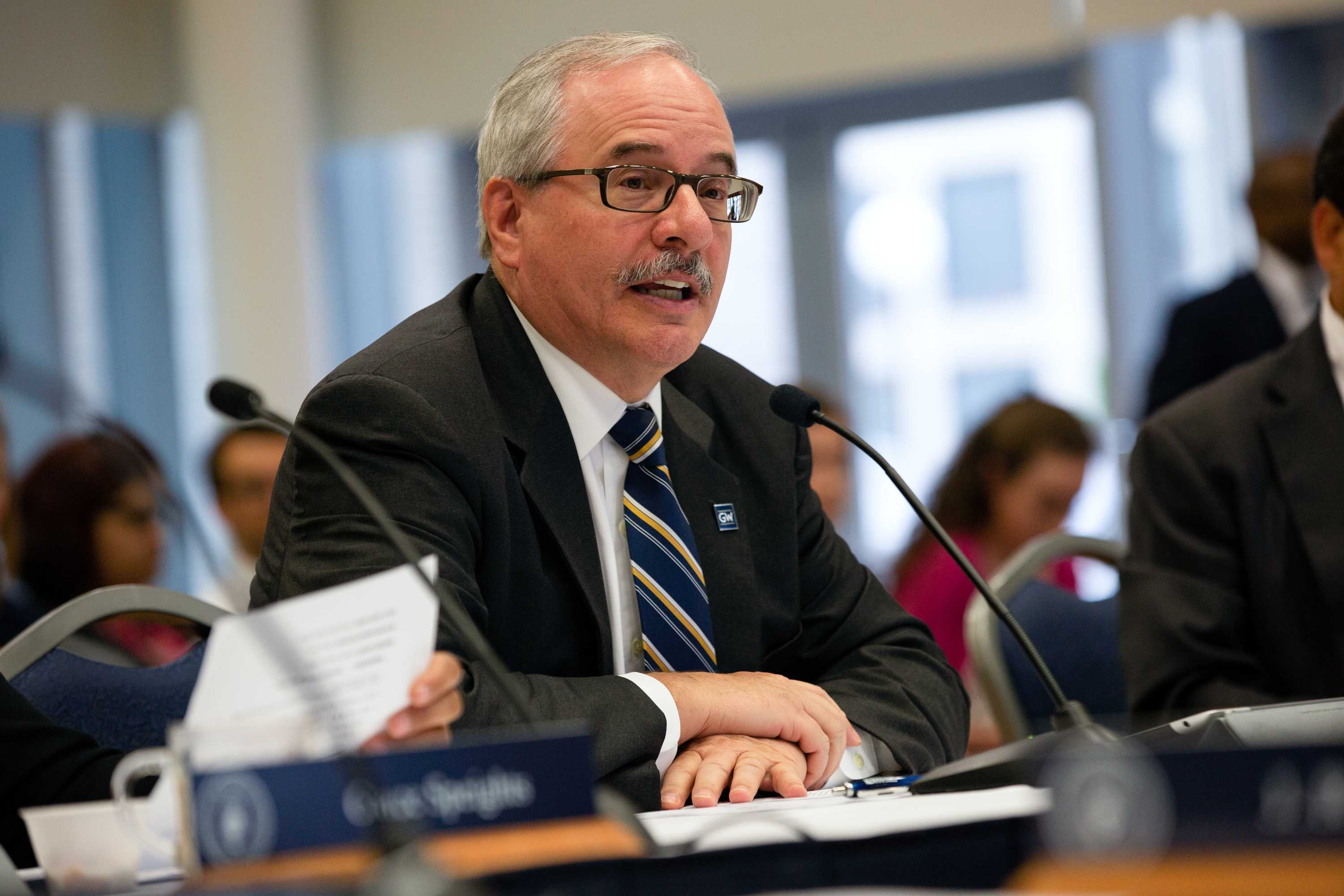
Hatchet File Photo
The survey, based on responses from more than half of GW’s employees, found dissatisfaction with inconsistent leadership, inefficient communication, poor service culture and a lack of employee appreciation across the University. The four findings would become the focal points of the culture initiative.
Officials extended the Disney Institute partnership in February 2019 to address the issues, but not without controversy. The partnership became a source of tension from faculty and students who said the partnership’s cost, which officials have repeatedly declined to make public after disclosing an initial $300,000 allotment, could have been better spent to reduce costs like housing or dining.
In pursuit of strengthening GW’s medical enterprise, LeBlanc oversaw the restructuring of the Medical Faculty Associates to give the University more administrative control, which MFA doctors said could improve the organization’s management practices and its financial standing.
In the summer, LeBlanc and the Board announced a two-fold enrollment strategy. Officials would downsize the growing undergraduate population by 20 percent and increase the proportion of STEM majors from 19 to 30 percent as part of the strategy, dubbed the “20/30 Plan.”
2019-20 academic year
GW’s new enrollment strategy didn’t sit well with many faculty, who sounded alarm bells about impacts on revenue and diversity. Administrators internally modeled various scenarios to achieve the strategy’s goals but concluded that no models would meet all enrollment objectives.
LeBlanc announced the development of a new strategic plan in September 2019 with the 20/30 Plan built in as an underlying assumption.
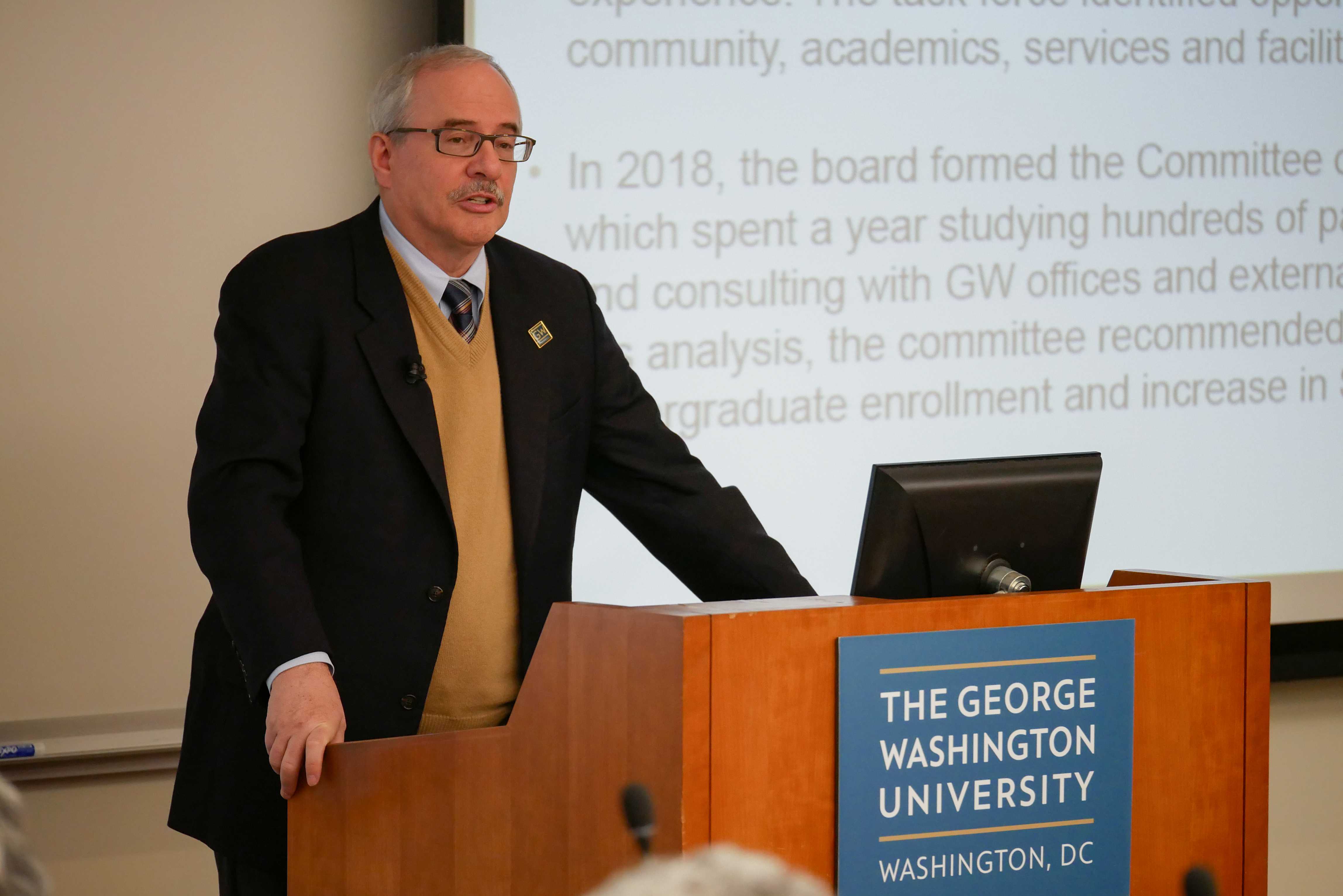
File Photo by Jack Fonseca
Faculty soon began a probe of the enrollment strategy’s creation, prompting the Faculty Senate to pass a resolution the following February criticizing officials for violating principles of shared governance in its creation.
The same month, LeBlanc faced backlash from students after he compared potential majority student support for closing the Regulatory Studies Center to hypothetical support for “shooting all the Black people here” during a conversation with a member of Sunrise GW about divesting GW’s endowment from fossil fuels. The Board announced plans to divest from fossil fuels a few months later.
Later that month, more than 80 professors signed a petition calling for LeBlanc to resign in light of criticisms of the analogy, the 20/30 Plan and the culture initiative.
But a few weeks later, LeBlanc’s tenure was upended as the pandemic sent students home to finish the spring 2020 semester remotely.
Just weeks after the pandemic shutdown campus, Mayor Muriel Bowser announced that the GW Hospital would be opening a new facility in Southeast D.C. in conjunction with the Medical Faculty Associates – a change that fit with one of LeBlanc’s medical enterprise initiative.
In the midst of remote operations, LeBlanc also formed special committees to evaluate the Marvin Center’s namesake and the Colonials moniker under a new Board-established framework.
The pandemic created a $180 million annual budget gap, leading to a swath of cuts. LeBlanc even temporarily cut his own pay. In the summer, officials reverted to staff layoffs to balance the budget.
2020-21 academic year
As the fall semester began, support for LeBlanc reached a new low as hundreds of GW community members called for him to resign. They cited LeBlanc’s handling of the pandemic, layoffs and the hiring of Heather Swain, who faced widespread criticism from students and faculty given her role in shielding information from prosecutors on the Larry Nassar case at Michigan State University.
“We need a president who understands GW and can inspire the whole community,” a petition signed by hundreds of faculty and community members reads. “We need a president with compassion and a clear moral compass, a vision for the future that builds up GW’s reputation and the capacity to communicate effectively and steer our community through difficult times. Thomas LeBlanc is not that president.”
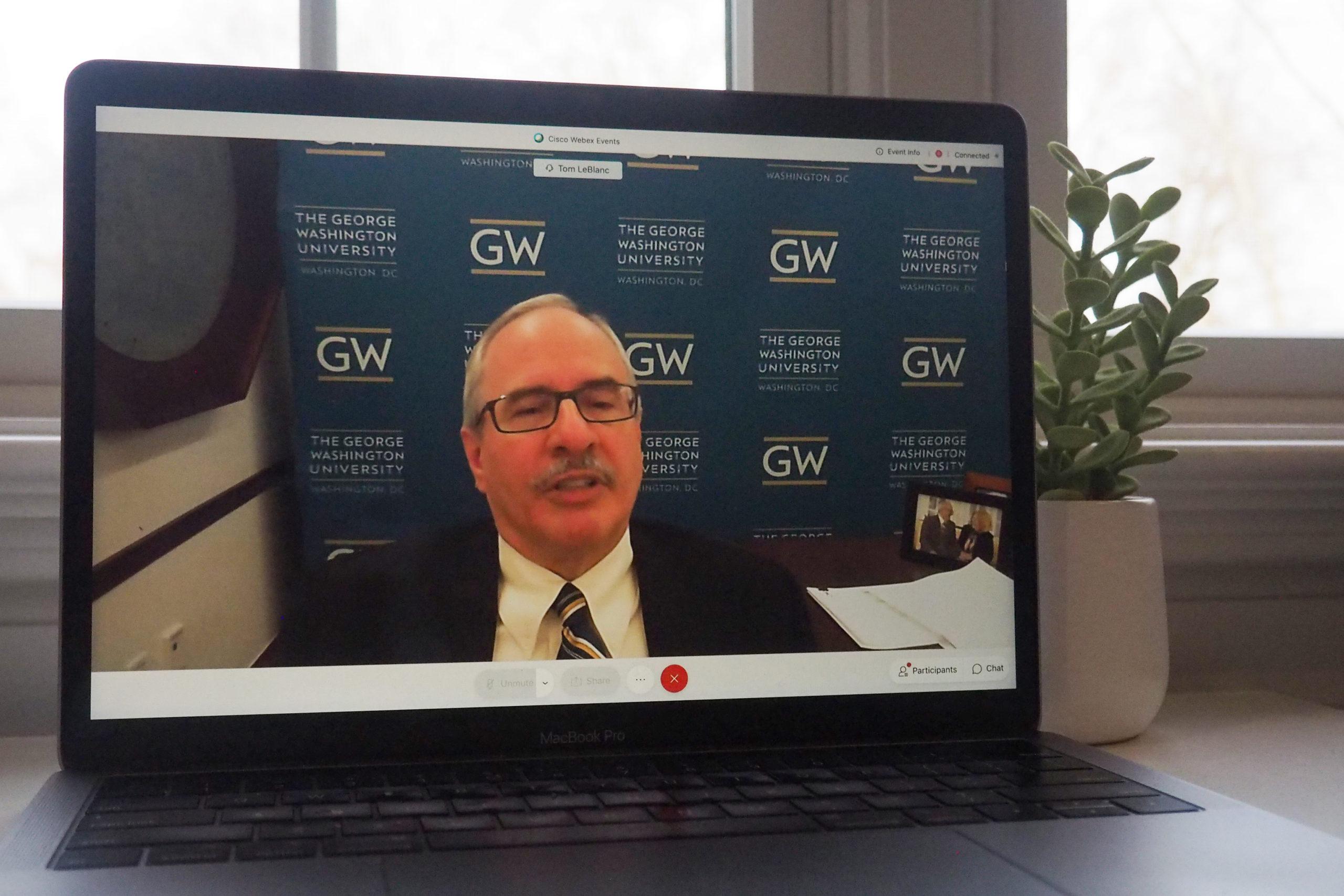
File Photo by Grace Hromin | Senior Photo Editor
After weighing a vote of no confidence, faculty approved a survey of University leadership in November 2020 to gauge faculty sentiment. The results indicated a majority of professors had lost confidence in the president’s abilities to lead GW.
The Board was set to conduct a standard review of LeBlanc the following spring to inform its decision whether to renew his contract. Despite the fallout, trustees largely maintained their public support for the president, lauding his efforts to lead GW during the pandemic.
But as the review was underway, LeBlanc announced he would step down as president at the end of the 2021-22 academic year.
2021-22 academic year
As the University community returned to campus in person for the first time since March 2020, LeBlanc has largely laid low, with the exception of a “focused initiative” in October – when they initially planned to launch GW’s next major fundraising campaign – to make GW more affordable for Pell grant recipients.
After falling behind schedule compared to the previous presidential search in 2017, Board Chair Grace Speights announced at a Faculty Senate meeting in September that Mark Wrighton, the former chancellor at Washington University at St. Louis, would fill the position as interim president for up to 18 months. Wrighton’s appointment shortened LeBlanc’s timeline for retirement, instead stepping down at the end of the 2021 calendar year.
Students and faculty are hopeful that a Wrighton interim presidency could mean more transparency and repaired relationships with administrators. But as the University emerges from the pandemic and faces a push to strengthen shared governance, GW could spend as many as 18 months waiting for a permanent leader to chart a path ahead.
Zach Schonfeld contributed reporting.





